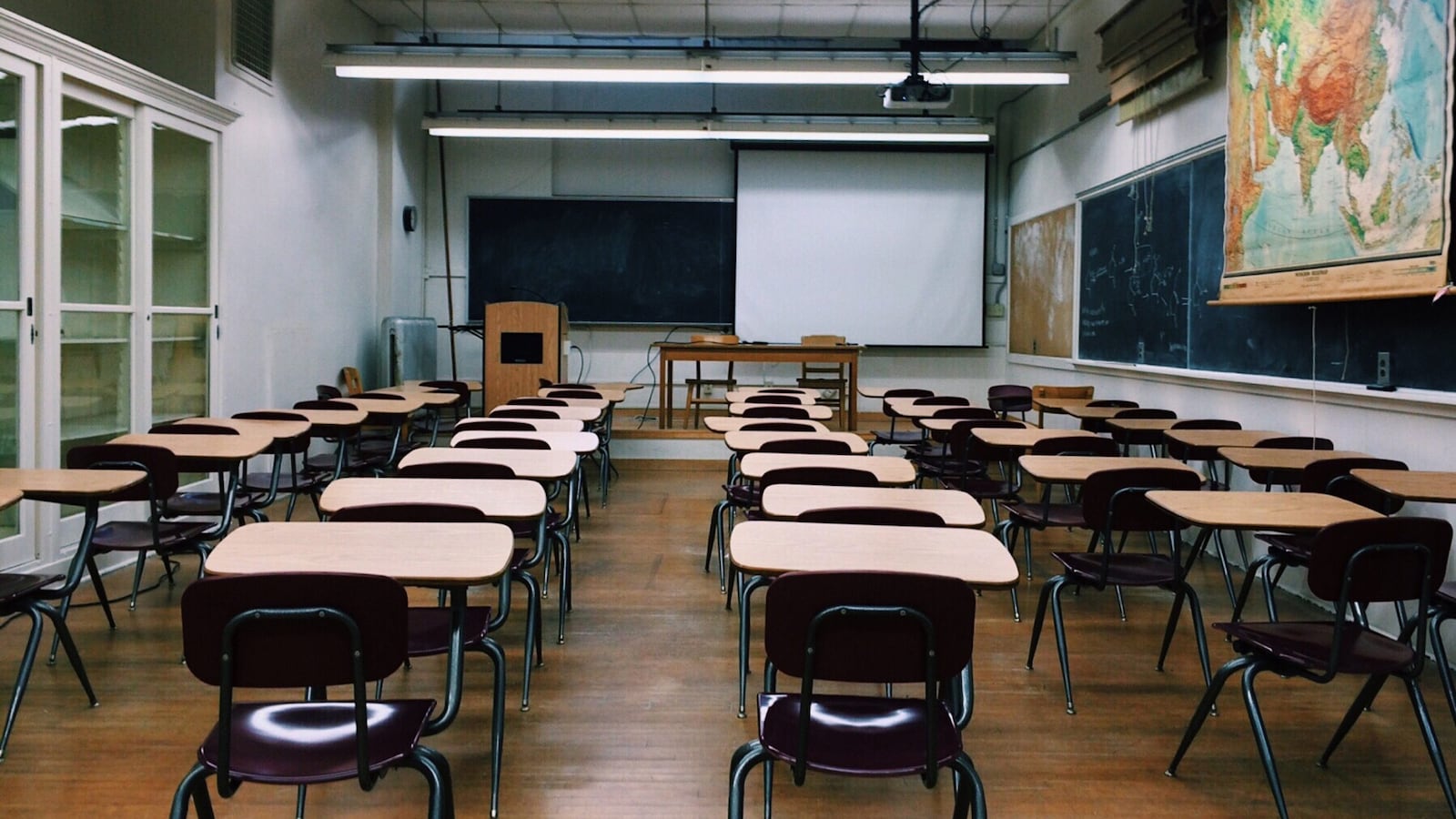When Chicago closed its schools a month ago, Kellia Philips wondered how her children would continue their education. She had been living with an aunt and juggling school, cooking meals, and trying to teach her kids all while feeling cut off from her son’s school.
A friend mentioned to her that school was providing homework packets and devices, so Philips rushed to stand in line at Ariel Community Academy on the city’s Southeast Side. But the Chromebook she received, with a cracked screen, proved unusable. She said she would reach out to the school’s principal to exchange the device, but feels discouraged since it has been hard for her to get in contact with her son’s teachers or the homeless liaison.
Philips remains deeply worried about her third-grader who is on the autism spectrum.
She hasn’t been able to resume the special education services he was receiving. “I can’t give the services, and I don’t want Johnny to be behind,” Philips said.
With unstable housing, Johnny and his three siblings are among an estimated 12,000 homeless students attending Chicago Public Schools.
Those children already endured instability and uncertainty before a pandemic swiftly closed schools that fed, sheltered and educated them by day. Now with shaky connections to school and those services, families like Philips’ find that spotty communication adds to their anxiety.
The district and schools have put a priority on helping homeless students — those in shared or temporary quarters, in shelters, or on the streets. As of last Friday, Chicago Public Schools had given out more than 6 million meals to families at hundreds of schools. Last week, the district announced it would provide 12,000 internet hotspots, at a cost of $2.5 million, to students who are homeless to help in their education. The devices come with four months of free internet.
In addition to providing meals and technology for students to access learning, the district has given school leaders guidance on how to shape their remote learning curriculum for homeless students. But ultimately, responses depend on the school. (Chicago Public Schools declined to comment on individual students or families, but said it has set up a hotline and email for families to call: familyservices@cps.edu or 773-553-5437.)
“Students probably have smaller cramped spaces and are not able to really set up learning spaces that some of their peers may be able to,” said Molly Burke, executive director of the district’s office of engagement. In planning services, the district is considering that highly mobile families may not take school supplies and projects with them from space to space, depending on their storage capacity.
Burke said she is working to ensure that students in temporary living situations have work packets and that unaccompanied youth have cell phones to ask for help from teachers.
Despite the devices the district is providing, advocates remain concerned. “A lot of our schools provide laundry services for families. Some schools have also provided showers for families. We can’t do any of that anymore. We’re providing food on a daily basis, but are we providing toilet paper and cleaning supplies? I highly doubt it,” said Sarah Rothschild, education policy analyst at the Chicago Teachers Union.
Others worry about reaching the students who need help most. Teachers say they haven’t been able to reach all of their students, and that some phone numbers don’t work or families have suddenly moved. Even before the pandemic, advocates warned about accurately identifying homeless students.
The reason for different estimates of homeless numbers varies. Patricia Nix-Hodes, director of the Coalition for the Homeless, said that some families may not know that they meet the legal definition of homelessness and “without very active engagement on the part of the school to connect with the students and learn about their living situation, there are students who fall through the cracks.”
Schools offer services that vary by age. Homeless high school seniors, for instance, could get from school counselors or homeless liaisons assistance on how to navigate financial aid for colleges and universities.
“If a student is unaccompanied and homeless they’re allowed to apply for funding without their parents’ information and as an independent student, which is really crucial for them being able to access higher education,” said Alyssa Philips, an education attorney at the Coalition for the Homeless.
Devontay, 18, has been a homeless senior at DRW College Prep, a Noble Network Charter School on the city’s West Side. Across Noble’s 18 schools, 719 students have been identified as homeless. To protect his privacy, Chalkbeat agreed not to publish his full name.
Over the past month, Devontay has been in touch with his school’s college seminar teacher via email to get assistance with navigating college. He lives in a shelter operated by the Night Ministry where he has access to the internet and food.
Before schools closed, Devontay was looking for a suit for prom. He had a date. “I was looking forward to me and my friends having fun and making the best of it before we graduate,” he said.
He had been accepted to Columbia College Chicago where he wanted to study animation and hoped to be the first in his family to go to college.
While excited and anticipating graduation and college, he mourns the months now lost to quarantine. It feels like so much has gone to waste, he said. “For the big year to turn out like this, what high school senior graduating in 2020 wouldn’t feel like that?”

